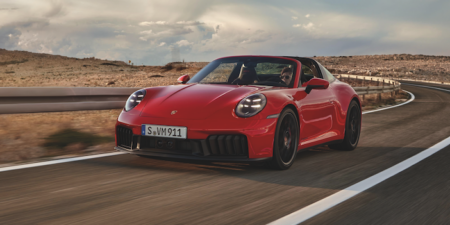An innovative prototype rear drive unit, claimed to be 24% (8.5kg) lighter than its baseline Range Rover production unit, has been revealed. The ultra-lightweight concept was engineered as part of the recently completed ULTRAN (Ultra-Lightweight Transmission and Driveline) collaborative research project.
ULTRAN has been a three-year research initiative led by Jaguar Land Rover in a consortium including Ricardo, Tata Steel, Lubrizol, GRM Consulting, American Axle & Manufacturing and the UK Universities of Southampton, Newcastle and Warwick – with the support of the UK’s innovation agency, InnovateUK. The project set out to accelerate the processes of designing, developing and validating cost-effective lightweight drivetrain technologies, aiming to push forward the practical application of reducing the mass of driveline systems and components. The latest generation Range Rover was the baseline for the research – a vehicle already the subject of mass reduction, being 16% lighter than its predecessor.
Ricardo led the concept generation through to the manufacture and testing of the rear drive unit, which was a major focus of the ULTRAN project. A clean sheet design with a Ricardo patent pending, the unit is based around a lightweight differential mounted within a compact, single-piece skeletal casing with tough, low-density lightweight plastic covers. The form of the skeletal design originated from finite element-based simulation and topology optimization. Using this data-driven template, the skeletal design could then be developed in CAD, based on a single integrated aluminum die-cast structure, with closures and fluid seals formed by the lightweight plastic cover assemblies.
Internal parts were eliminated and those remaining simplified, while maintaining comparable performance or improving upon the baseline design. The conventional differential carrier has been eliminated, with the crownwheel supported in a double-row angular contact bearing, and differential gears supported directly within the crown wheel. A hollow pinion shaft was designed and manufactured, delivering a claimed mass saving of 1kg for this component alone. The overall 8.5kg (24%) mass saving of the complete unit was achieved approximately equally between the gears and shafts, and the casing system.
The TRL-5 prototypes of the rear drive unit manufactured by the project have been evaluated under tests including high torque (5000Nm), lubrication tilt, efficiency, durability (including extreme duty cycle) and in-vehicle ride and NVH. Through these evaluations, the partners say the prototype unit demonstrated its functionality with comparable performance to the current production unit.
“The Ricardo contribution to the ULTRAN project has demonstrated the very significant opportunities for driveline lightweighting that can be realized when a systems approach to product design for mass optimization is applied,” commented Ulf Herlin, head of the Ricardo driveline and transmission systems product group. “ULTRAN set very ambitious goals by defining as its baseline vehicle a product that in many respects represents the current state of the art in terms of driveline mass reduction. By applying the methodologies demonstrated in the ULTRAN project, we have shown that significant further mass reductions – with consequent improvements in vehicle efficiency and CO2 savings – are possible at comparable cost and performance to existing production, based on market-ready materials, processes and design technologies.”




